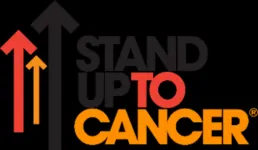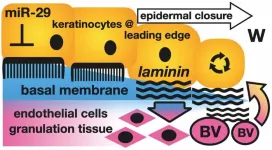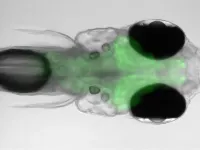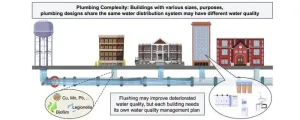(Press-News.org) *Embargoed until 14:00 US Eastern / 19:00 UK GMT / 20:00 Europe CET – Thursday 1 February*
Governments and businesses are relying on dangerous amounts of future removal of carbon dioxide (CO2) from the atmosphere, instead of more rapidly reducing emissions and phasing out fossil fuels. This problem is partly due to an incomplete picture1 of the damaging consequences of carbon dioxide removal for people, food security and natural ecosystems, according to new research published in Science.
The paper finds that the carbon dioxide removal potential currently reported by the UN climate science assessment body, the Intergovernmental Panel on Climate Change2 (IPCC), greatly overestimates how much heavy lifting carbon dioxide removal, specifically bioenergy with carbon capture and storage, and tree-planting, can safely do in the pursuit of climate targets. The IPCC works by synthesising the best available literature at the time of writing and publishing their reports.
Scientific understanding of how to slow and halt global warming has become more sophisticated in recent years, allowing the researchers to now map carbon dioxide removal options against sustainability risks, to see what would keep to climate policy goals without posing unacceptable hazards.
Lead author, Alexandra Deprez, IDDRI-Sciences Po said: “Governments and industries are banking on large future deployments of carbon dioxide removal to deliver the Paris Agreement climate goals, but the scale proposed threatens food security, human rights, poses serious damage to natural ecosystems and risks overstepping multiple planetary boundaries in potentially irreversible ways.”
The researchers examined the published climate science that informed the most recent IPCC reports, and the pathways limiting warming to 1.5°C. They found the sustainable thresholds for land-based carbon dioxide removal3 using bioenergy crops, forestry and ecosystem restoration to be significantly lower than deployment expectations conveyed by most pathways presented in the IPCC reports, once biodiversity and human livelihoods risks4 are applied to the various scenarios.
Co-author Prof. Paul Leadley, University of Paris-Saclay said: “The levels of carbon dioxide removal that are considered to be feasible at reasonable cost by the IPCC create high risks for agriculture, livelihoods and the environment. That's because there isn't enough land on our planet for huge amounts of carbon dioxide removal - something else has to give. Biodiversity, freshwater use, and food security should be the issues that guide limits to carbon dioxide removal rather than current estimates of technical and economic potentials.”
The latest IPCC mitigation report (AR6 WGIII) deals with the issue of delivering against the Paris Agreement ambitious climate goals, in part by identifying the technical and economic limits to carbon dioxide removal options. The upper end of the proposed ceiling for bioenergy with carbon capture and storage, and afforestation/reforestation (maintaining, enhancing or planting new forests) when considered as land area, could require converting up to 29 million km2 of land - over three times the area of the United States - to bioenergy crops or trees. This could potentially push over 300 million people into food insecurity, which is almost equivalent to the entire US population.
Analysis of existing climate commitments5 reveals that by the end of this decade, countries collectively plan to produce twice the amount of fossil fuels than recommended in the IPCC Paris-aligned pathways with low or no overshoot past 1.5℃, and by 2060 use 12 million km2 for land-based carbon removal, close to the total amount of currently available global cropland.
Co-author Dr. Kate Dooley, University of Melbourne said: “Carbon dioxide removal into land and forests cannot legitimately be used to offset continuing fossil fuel emissions. Government climate plans should set separate, transparent targets for emission reductions and removals, which limit reliance on the latter, and meet climate and biodiversity commitments through restoring and maintaining natural ecosystems.”6
The paper makes three recommendations7 to policymakers and scientists:
Estimate a sustainable carbon dioxide removal (CDR) budget, based on socio-ecological limit
Identify viable 1.5°C pathways that do not overstep sustainability CDR thresholds, with focus on near term national climate plans (NDCs) due in 2025 under the UNFCCC process
CDR governance should allocate limited sustainable supply to most legitimate uses
The paper also calls on the scientific community to inform the next cycle of IPCC reports – which will come in the second half of this critical decade for climate action. Identifying Paris-aligned scenarios that do not overstep sustainability limits should be a key priority for the seventh IPCC assessment report (AR7) cycle.
Alexandra Deprez added: “The climate and biodiversity crises are two sides of the same coin, and large-scale carbon dioxide removal will not solve either of these problems. Carbon removal needs to be carefully deployed at a much smaller scale than current climate plans and most climate scenarios suggest, and alongside a rapid, just, and orderly fossil fuel phaseout, if we are to meet our climate targets.”
- ENDS -
NOTES TO EDITORS:
The paper will be published online at www.science.org at 14:00 US Eastern (19.00 GMT, 20:00 CET) on Thursday 1 February, when the embargo also lifts. When reporting on this paper, please reference DOI:10.1126/science.adj6171 or http://www.science.org/doi/10.1126/science.adj6171
CONTACT FOR MORE INFO AND INTERVIEWS:
Alexandra Deprez, Institute for Sustainable Development and International Relations (IDDRI – Sciences Po); lead author, speaks English, French, Spanish
alexandra.deprez@iddri.org / +33 7 68 55 98 54
Prof. Paul Leadley, University of Paris-Saclay
paul.leadley@universite-paris-saclay.fr / +33 6 62 37 14 96, speaks English, French
Dr. Kate Dooley, University of Melbourne
kate.dooley@unimelb.edu.au / +61 412 619 958, speaks English
Prof. Phil Williamson, University of East Anglia
P.Williamson@uea.ac.uk / +44 7749 092287, speaks English
Prof. Felix Creutzig, Mercator Research Institute on Global Commons and Climate Change, Technical University Berlin
creutzig@mcc-berlin.net / +49 30 33 85 537 225, speaks English, German
Prof. Jean-Pierre Gattuso, Sorbonne University, CNRS; IDDRI-Sciences Po
jean-pierre.gattuso@imev-mer.fr / +33 695 92 68 80, speaks English, French
Prof. Wolfgang Cramer, Aix Marseille University, CNRS, IRD, Avignon University
wolfgang.cramer@imbe.fr / +33 6 82 04 35 95, speaks English, French, German, Swedish and Norwegian
Dr. Aleksandar Rankovic, Sciences Po
aleksandar.rankovic@sciencespo.fr / +33 6 33 49 64 00, speaks English, French, Spanish, Serbian
FOOTNOTES:
The IPCC AR6 WGIII Report does not comprehensively provide the land footprints, corresponding resources, and impacts of CDR use in modeled pathways. As a result, policy-makers do not have a clear view of the potentially dangerous consequences that delaying deep emission cuts has on shifting the mitigation burden onto land.
The IPCC releases a set of three assessment reports and a synthesis report every several years, and the most recent round - AR6 or assessment report cycle six - concluded in 2023. here: https://www.ipcc.ch/assessment-report/ar6/
The authors focussed on land-use change arising from bioenergy with carbon capture and storage (BECCS) and afforestation and reforestation (A/R), are the two CDR approaches most used in climate mitigation scenarios; and “nature-based” CDR (which includes various ecosystem restoration approaches). However they also note that Direct Air Carbon Capture and Storage (DACCS) is considered to have high carbon dioxide removal potential but has high costs and energy demands, with sustainability implications that are relatively unexplored. The researchers find it premature to assume that ocean-based carbon dioxide removal or DACCS can make substantial contributions to sustainable climate mitigation.
Overview numbers taken from the figure in the paper, which show the IPCC AR6 WGIII mitigation report’s estimates on the 'technical mitigation potential' amounts (mean, lower, and upper bounds) of carbon dioxide removal in GtCO2 per year, against a sustainability risk rating from the authors. The four categories of risk convey the scale of dangerous implications for sustainability across a series of factors, such as land use, food security, human livelihoods, ecosystems and biodiversity. The authors consider the 'high' sustainability threshold (i.e., bound between 'medium' and 'high' risk) to indicate the limit between acceptable and unacceptable sustainability impacts.
Nationally determined contributions (NDCs), as termed under the UNFCCC process.
New biodiversity protection goals and targets were agreed in December 2022 by parties of the Convention on Biological Diversity (CBD) through the Kunming-Montreal Global Biodiversity Framework: www.cbd.int/gbf
The three recommendations in more detail:
Estimate a sustainable carbon dioxide removal (CDR) budget, based on socio-ecological limits, to better inform policy making on CDR. There is an urgent need to assess a sustainable CDR budget across a full set of CDR methods.
Identify viable 1.5°C pathways that do not overstep sustainability thresholds of CDR, making it clearer to policymakers responsible for updating national climate plans (NDCs) in 2025 how delaying steep cuts in fossil fuels shifts the mitigation burden onto land, with dangerous consequences for human livelihoods and natural ecosystems.
CDR governance should allocate limited sustainable CDR supply to most legitimate uses, and put in place standards and regulations that supports high integrity use of CDR and halts the use of CDR for offsetting current or future fossil-fuel emissions.
ABOUT THE AUTHORS:
Alexandra Deprez (France): IDDRI research fellow in support of the French Presidency of COP21/Paris Agreement (2014-2016); UNFCCC negotiator in Costa Rica’s delegation for the Paris Agreement Rulebook (2017-2018); lead researcher at IDDRI on climate-biodiversity science-policy links
Paul Leadley (France): lead author in WGII AR5 (2014), lead author in IPBES Global Assessment report (2019), participant IPBES-IPCC co-sponsored workshop (2021)
Kate Dooley (Australia): lead author of the Land Gap Report (2022)
Phil Williamson (UK): lead author in IPCC Special Report The Ocean and Cryosphere in a Changing Climate (2022), and CDR expert
Felix Creutzig (Germany): coordinating lead author in WGIII AR6 (2022), expert on bioenergy in AR5, and lead author of journal article Considering sustainability thresholds for BECCS in IPCC and biodiversity assessments (2021)
Jean-Pierre Gattuso (France): coordinating lead author in IPCC Special Report The Ocean and Cryosphere in a Changing Climate (2022), and ocean-CDR expert
Wolfgang Cramer (France): lead author in IPCC reports since 1995, most recently WGII AR6 (2023)
Aleksandar Rankovic (France): Coordinator of IDDRI’s work on the UN biodiversity negotiations in advance of the Kunming-Montreal Global Biodiversity Framework (2018-2021) END
Sustainable carbon removals limits identified, huge climate mitigation challenge revealed
2024-02-01
ELSE PRESS RELEASES FROM THIS DATE:
Whole-brain projection patterns of single neurons in mouse hippocampus unveiled
2024-02-01
A study published in Science on Feb. 1 reported a comprehensive database of single-neuron projectomes consisting of over 10,000 mouse hippocampal neurons, thus revealing the spatial connectivity patterns of mouse hippocampal neurons at the mesoscopic level.
The study was conducted by teams from the Center for Excellence in Brain Science and Intelligence Technology (CEBSIT), the Institute of Neuroscience of the Chinese Academy of Sciences (CAS), the HUST-Suzhou Institute for Brainsmatics, Hainan University, the Kunming Institute of Zoology of CAS, Lingang Laboratory, and the Shanghai Center for ...
New study suggests culling animals who ‘don’t belong’ can be a flawed nature conservation practice
2024-02-01
New research published today in the journal Science has concluded that eradicating animals on the basis that they are not native in order to protect plant species, can be a flawed practice costing millions of dollars, and resulting in the slaughter of millions of healthy wild animals.
Introduced large herbivores, or megafauna, are claimed to have distinct and harmful ecological impacts, including damaging sensitive plants and habitats, reducing native plant diversity, and facilitating introduced plants. However, up to now these impacts have been studied without comparison to a proper ...
IU surgeon-scientist studying physiological effect of microorganisms in sinuses of chronic rhinosinusitis patients
2024-02-01
INDIANAPOLIS—An Indiana University School of Medicine surgeon-scientist is leading a multi-institutional grant investigating the role of the sinus microbiome in chronic rhinosinusitis, an inflammatory disease that causes the lining of the sinuses to swell. The research team will study biospecimens from human sinus surgery patients in the lab and examine how bacteria in the microbiome shape the disease process and might offer novel therapeutic strategies.
Vijay Ramakrishnan, MD, professor of otolaryngology—head ...
Stand Up to Cancer announces changes to scientific advisory committee
2024-02-01
LOS ANGELES – February 1, 2024 – Stand Up To Cancer® (SU2C) today announced changes to its Scientific Advisory Committee (SAC), which oversees SU2C’s scientific research.
Composed of cancer research leaders from academic, government, industry, and advocacy fields, SU2C’s SAC sets direction for research initiatives, reviews proposals for new grant awards, and conducts rigorous oversight of all active grants in the SU2C research portfolio in collaboration with SU2C’s president and CEO Julian Adams, Ph.D.
World renowned cancer researcher and Nobel laureate Phillip A. Sharp, Ph.D., who has chaired the SAC since SU2C launched in ...
Small RNAs take on the big task of helping skin wounds heal better and faster with minimal scarring
2024-02-01
Philadelphia, February 1, 2024 – New findings in The American Journal of Pathology, published by Elsevier, report that a class of small RNAs (microRNAs), microRNA-29, can restore normal skin structure rather than producing a wound closure by a connective tissue (scar). Any improvement of normal skin repair would benefit many patients affected by large-area or deep wounds prone to dysfunctional scarring.
Because the burden of non-healing wounds is so significant, it is sometimes called a “silent pandemic.” Worldwide, costs associated with wound care are expected to ...
Rural placements for medical students feed ‘pipeline’ for new family docs
2024-02-01
EDMONTON — New research shows an innovative education program is helping to address Alberta’s rural doctor shortage by making it more likely medical students will set up a rural family practice after graduation.
The University of Alberta was one of the first medical schools in Canada to set up its Rural Integrated Community Clerkship program back in 2007. It sends up to 25 third-year students for 10-month intensive work experiences with a single or small number of teaching physicians.
Instead of rotating to a new specialty placement every four to six weeks as in an urban ...
Zebrafish navigate to find their comfortable temperature
2024-02-01
All animals need to regulate their body temperature and cannot survive for long if it gets too high or too low. Warm-blooded organisms like humans have various ways to do this. They release heat by sweating or expanding the blood vessels in their skin, while shivering or burning fat in their brown adipose tissue has the opposite effect.
Cold-blooded animals such as the zebrafish, by contrast, cannot do any of these, so they have a different strategy. They look for places nearby that are at their “comfortable temperature,” just like how we might go out into the sun when we feel chilly or seek out some shade once it gets too ...
Buck scientists discover a potential way to repair synapses damaged in Alzheimer’s disease
2024-02-01
While newly approved drugs for Alzheimer’s show some promise for slowing the memory-robbing disease, the current treatments fall far short of being effective at regaining memory. What is needed are more treatment options targeted to restore memory, said Buck Assistant Professor Tara Tracy, PhD, the senior author of a study that proposes an alternate strategy for reversing the memory problems that accompany Alzheimer’s disease and related dementias.
Since most current research on potential treatments for Alzheimer’s focuses on reducing the toxic proteins, such as tau and amyloid beta, that accumulate in ...
Researchers identify critical pathway responsible for melanoma drug resistance
2024-02-01
(Boston)—One of the major challenges in cancer research and clinical care is understanding the molecular basis for therapeutic resistance as a major cause of long term treatment failures. In cases of melanoma, the main targeted therapeutic strategy is directed against the mitogen-activated protein kinase (MAPK) pathway. Unfortunately, in the vast majority of these patients, resistance to MAPK inhibitor therapies develops within one year of treatment.
In a new study from Boston University Chobanian & Avedisian School of Medicine, ...
Pandemic lockdowns and water quality: a revealing study on building usage
2024-02-01
During the COVID-19 pandemic, lower occupancy in buildings led to reduced water use, raising concerns about water quality due to stagnation. Government warnings highlighted increased risks of chemical and microbiological contamination in water systems. Studies showed that reduced usage and stagnation could elevate heavy metal levels and decrease disinfectant effectiveness, affecting microbial growth. To address this, regular fixture flushing was recommended, which temporarily improved water quality but also revealed the complexities of managing building water systems effectively.
In a recent study (https://doi.org/10.1016/j.ese.2023.100314) ...





